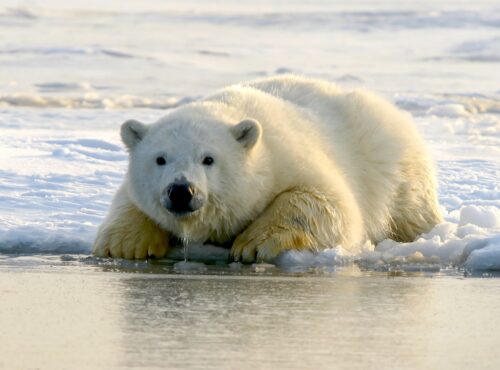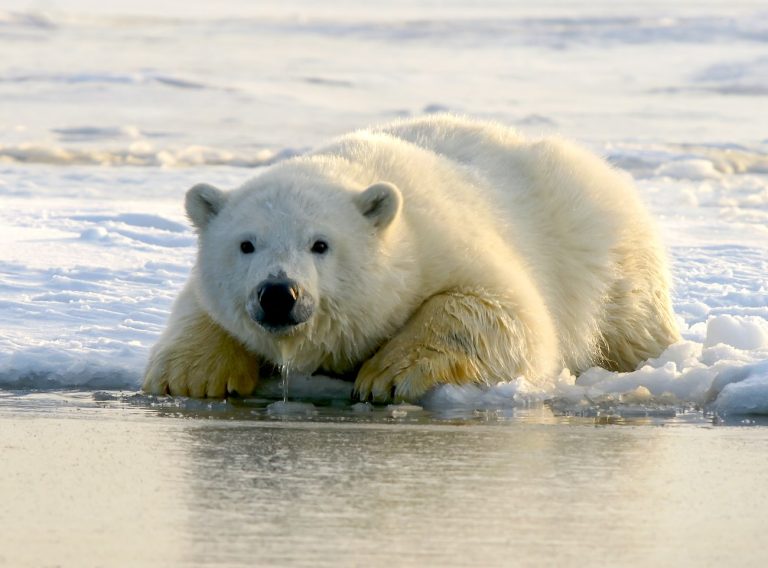

Looking back at more than 20 years of climate advocacy, two themes emerge: activists’ stubborn reluctance to acknowledge any inconvenient science, and the ever-changing flow of favorite stories, first promoted and then cast aside. [emphasis, links added]
First constant: Focus on scaring the public, which in turn makes for bad climate policy.
At the beginning of this century, polar bears were symbols of climate disaster.
Protesters dressed as polar bears while Al Gore's 2006 hit film “an inconvenient truth“We are shown a sad and lively polar bear drifting to death.
The Washington Post warned that polar bears are facing extinction, and the chief scientist of the World Wildlife Fund even claimed that by 2012, some polar bear populations will be unable to reproduce.
Then in the 2010s, activists stopped talking about polar bears.
Why? After years of misinformation, they were ultimately unable to ignore the overwhelming evidence that the global polar bear population had increased dramatically from about 12,000 in the 1960s to about 26,000 today. (Main reason? People are hunting polar bears a lot less).
The same thing happened with the depiction of Australia's Great Barrier Reef.
Activists have been chanting for decades that coral reefs are being wiped out by rising sea temperatures.
Following the massive damage caused by cyclones in 2009, Australian officials estimate coral cover reached its lowest level in 2012.
The media is awash with talk of a “Great Barrier Reef disaster”, with scientists predicting that the Great Barrier Reef will be destroyed by 2022.
The latest official statistics tell a completely different story.
Over the past three years, the Great Barrier Reef has seen more coral cover than at any time since records began in 1985, with 2024 set to set a new record.
It doesn’t fit the plot, but
Record coral cover on Great Barrier Reef set for 2024
According to official data from all 11 UK departments,
The past three years, 2022 to 2024, have been unprecedented
Data: https://t.co/MQ0qkITsby pic.twitter.com/fJN15BjHMk
— Bjorn Lomborg (@BjornLomborg) July 2, 2024
Reports of good news are only a small part of the horror story.
A recurring climate story involves small Pacific islands being submerged by rising sea levels.
In 2019, United Nations Secretary-General Antonio Guterres flew to Tuvalu to shoot the cover of Time magazine.
Wearing a suit, he stood knee-deep in water to demonstrate “our sinking planet.” The accompanying article warned that the island and others like it would be “completely wiped off the map” by rising sea levels.


This summer, The New York Times finally shared what it called “surprising” climate news: Almost all atoll islands are growing in size. In fact, the scientific literature has been documenting this trend for more than a decade.
While rising sea levels do erode land, additional sand from ancient corals washes up on low-lying coasts.
Extensive research has long shown that this growth is stronger than climate-induced erosion, meaning Tuvalu's land area is increasing.
Climate change is real. It's man-made. This is a challenge that requires smart policies.
But activists have done great harm to their cause by refusing to acknowledge evidence that challenges their deeply pessimistic worldview.
All these misleading claims add up to a climate panic that has led politicians to pass climate legislation that now costs the world more than $2 trillion a year while achieving only marginal benefits.
Now, deadly heat waves are the new horror story and the latest example of willful neglect of the bigger picture.
Recently, President Biden declared that “heat is the number one weather-related killer in the United States.” He was wrong 25 times.
Extreme heat kills nearly 6,000 people each year, while cold kills 152,000 Americans each year, 12,000 of whom die from extreme cold.
Despite rising temperatures, age-standardized extreme heat deaths have declined by nearly 10% per decade in the United States, with larger declines globally, largely because wealthier people are better able to afford air conditioning.
If 6,000 heat wave deaths are the real priority, then a sensible response would be to ensure that electricity remains cheap in the United States so that not just the rich can afford to run air conditioners.
They undermine public trust by emphasizing hot deaths because they fit the narrative, while ignoring the more cold deaths.
The same policy prescriptions would apply if President Biden focused on the 152,000 Americans who die from cold every year.
When seniors can't afford to heat their homes in the winter, strokes and heart attacks surge.
Sadly, instead of reducing energy costs, many climate policies have the opposite effect.
It's hard not to see a pattern in which activists worried about climate issues scare people and choose to ignore inconvenient science for as long as possible—and then, when it becomes too embarrassing not to do so, will turn to new climate fears.
But intimidation campaigns have consequences. They make everyone – especially young people – miserable and frustrated.
Fear can lead to poor policy choices, such as Western governments spending trillions of dollars on ineffective climate responses.
They undermine public trust by emphasizing hot deaths because they fit the narrative, while ignoring the more cold deaths.
Telling half-truths while devoutly claiming to be following science benefits activist fundraising, generates clicks for the media, and helps politicians unite voters.
But this leaves us all ill-informed, making the situation worse.
Popular photo on Unsplash by Hans-Jurgen Mager
Bjorn Lomborg is the Chairman of the Copenhagen Consensus, a visiting fellow at the Hoover Institution at Stanford University, and the author of “False Alarm” and “Best Things First”.
